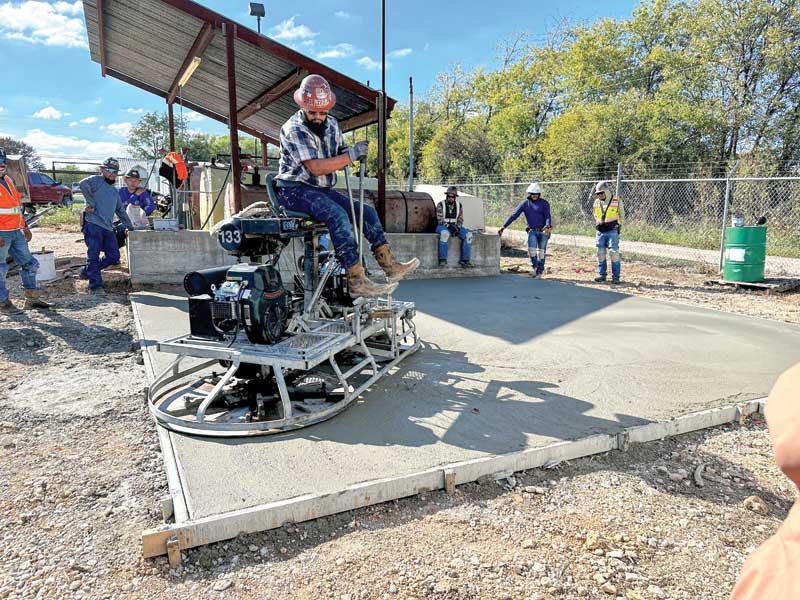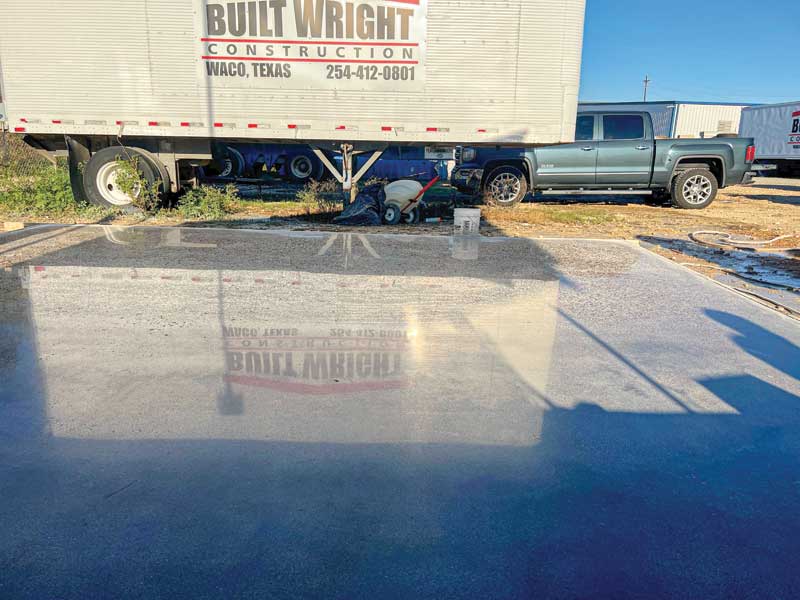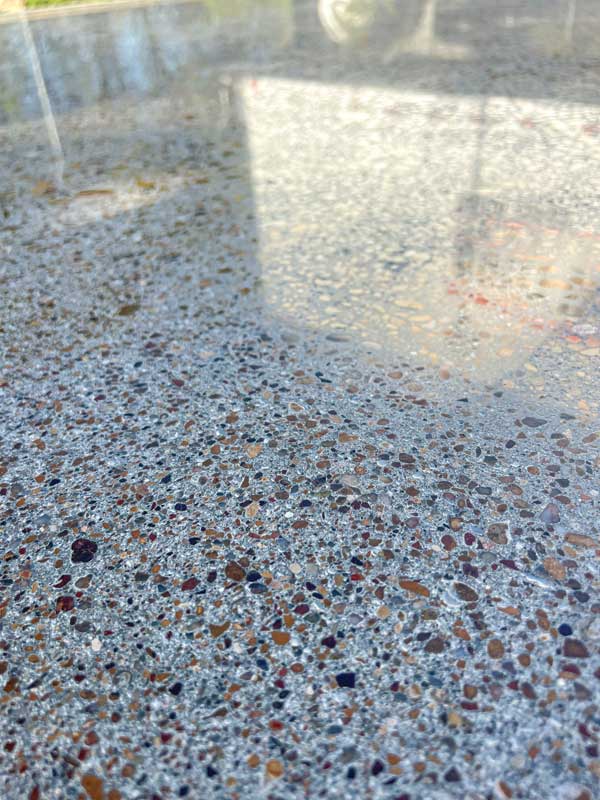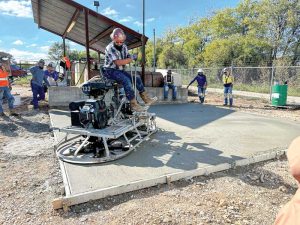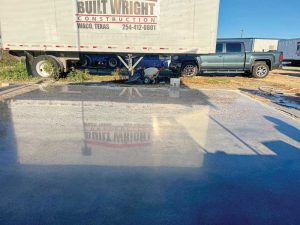For readers unfamiliar with surface micro texture performance, the average roughness (Ra) is a measure of the surface roughness (micro texture) of a material, such as concrete. A higher Ra value indicates a rougher surface, and a lower Ra value means a smoother surface. This can affect appearance, durability, and other performance aspects of the concrete. Ra can also be useful in evaluating other concrete surface qualities to ensure proper surface preparation, treatments, and performance of applied systems.
Owner of Premier Concrete contracting, Eric Traffic, says, “It is eye-opening to measure Ra after final troweling on a floor. There are differences between finishers, equipment, and blades. A concrete slab can be finished with more precise Ra tolerances using proper finishing aids and logical mix designs, and paying attention to blade and tool selection. This leads to denser slabs with higher abrasion resistance and lower porosity.”
Finishing requires skilled and experienced professionals to oversee and execute the work. A well-finished concrete surface will reduce the need for maintenance and repairs over time, increase the structure’s lifespan, and produce a strong, good-looking surface. Contractors must be required to attend necessary training to ensure their skill set aligns with performance demands. Failure to do so may result in defaulting to old routines, which can compromise the harmony of finishing tasks with other important steps.
Curing
Curing, the final and culminating phase, is the process of allowing the concrete to harden and reach its full strength by controlling temperature and preventing the loss of moisture. Proper curing is essential, as it affects the final strength, durability, and quality of the concrete. Curing should be reviewed and updated with each project, not simply doing whatever has been done before.
The approach to curing will be informed by the needs of the individual components of the mix (i.e. slag, limestone cement, calcined clay, reclaimed versus standard fly ash types, etc.) to ensure water demands, alkalinity, milling quality, and other factors are accounted for. All too often, this last step is under considered and creates most of the problems with volume change (i.e. cracking, curling, etc.). As Tyler Ley, PhD, a civil engineering professor at Oklahoma State University, says, “The most common curing of all is not curing.”1
The curing process starts right after placing and finishing (including consolidation) and helps maintain the right moisture and temperature levels to ensure the desired strength of the concrete. If executed properly, curing will aid in developing the concrete’s full strength and durability. If done incorrectly (e.g. allowing the concrete to dry too quickly as is common in North America), it can weaken the structure and lead to cracking and other malformations. In addition, insufficient curing can lower abrasion resistance and lead to early deterioration of the concrete surface. How long the concrete will need to cure depends on several critical factors. They include the following:
- Mix design (mixture proportions)
- Specified strength
- Weather conditions
- Current and future exposure conditions
- Size and shape of the concrete system produced



